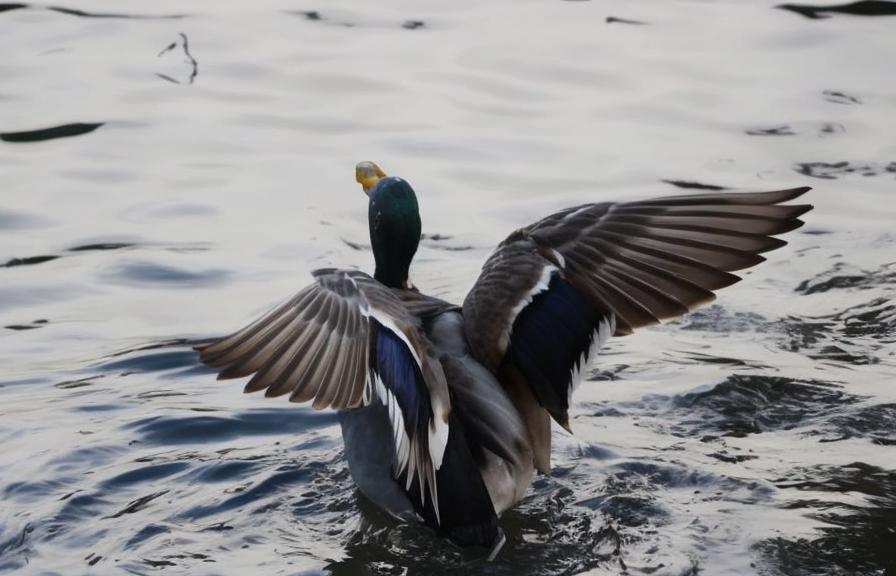Ducks have been an integral part of Mexican culture and agriculture for centuries. Mexican duck breeds are known for their adaptability to the diverse climates and environments found throughout the country. These breeds have played a crucial role in providing meat, eggs, and feathers for various purposes. Mexican duck breeds are also valued for their ability to forage and thrive in free-range environments, making them an ideal choice for small-scale and sustainable farming practices.
The diversity of Mexican duck breeds reflects the rich cultural and geographical tapestry of Mexico. From the highlands of the Sierra Madre to the coastal regions of the Yucatan Peninsula, Mexican duck breeds have evolved to meet the specific needs of their respective environments. This diversity has led to the development of unique traits and characteristics that make Mexican duck breeds a valuable asset to farmers and conservationists alike. In this article, we will explore the characteristics, historical significance, conservation efforts, and breeding practices of Mexican duck breeds, shedding light on their importance in Mexican agriculture and culture.
Key Takeaways
- Mexican duck breeds are known for their unique characteristics and physical appearance, making them popular among duck enthusiasts.
- Some popular Mexican duck breeds include the Aztec, Mexican Crested, and Peking ducks, each with their own distinct traits and qualities.
- Mexican duck breeds have a rich historical significance, with some breeds dating back to ancient Aztec and Mayan civilizations.
- Conservation efforts for Mexican duck breeds are important to preserve their genetic diversity and prevent extinction.
- Breeding and raising Mexican duck breeds requires knowledge of their specific needs and standards, as well as a commitment to maintaining their health and well-being.
Characteristics and Physical Appearance of Mexican Duck Breeds
Mexican duck breeds are known for their diverse physical characteristics and appearances. From the small and colorful Crested Duck to the large and majestic Pekin Duck, Mexican duck breeds come in a wide range of sizes, shapes, and colors. One common trait among many Mexican duck breeds is their hardiness and adaptability to different climates and environments. This makes them well-suited for a variety of farming practices, from small backyard flocks to large commercial operations.
In addition to their adaptability, Mexican duck breeds are also prized for their excellent foraging abilities. Many of these breeds have been developed to thrive on a diet of insects, plants, and grains, making them an ideal choice for free-range farming. Their ability to convert forage into high-quality meat and eggs makes them a valuable asset to sustainable farming practices. Furthermore, Mexican duck breeds are known for their calm and friendly dispositions, making them a popular choice for small-scale farmers and homesteaders.
Popular Mexican Duck Breeds
Several Mexican duck breeds have gained popularity both within Mexico and internationally. One of the most well-known Mexican duck breeds is the Pekin Duck, which is prized for its large size, rapid growth rate, and excellent meat quality. The Pekin Duck has become a staple in many commercial duck farming operations due to its high productivity and adaptability to various environments.
Another popular Mexican duck breed is the Crested Duck, known for its distinctive crest of feathers on its head. This breed is valued for its ornamental appearance and friendly disposition, making it a popular choice for backyard flocks and hobbyist breeders. The Crested Duck comes in a variety of colors, adding to its appeal as a decorative addition to any farm or homestead.
The Khaki Campbell Duck is another popular Mexican breed known for its excellent egg-laying abilities. This breed is prized for its high egg production and adaptability to different climates, making it a valuable asset to small-scale farmers and homesteaders looking to produce their own eggs.
Historical Significance of Mexican Duck Breeds
Mexican duck breeds have a long and storied history that is deeply intertwined with the cultural and agricultural traditions of Mexico. Ducks have been raised in Mexico for centuries, providing a valuable source of meat, eggs, and feathers for various purposes. The Aztecs, one of the ancient civilizations of Mexico, were known to raise ducks for food and ceremonial purposes, highlighting the long-standing cultural significance of ducks in Mexican society.
Throughout history, Mexican duck breeds have been selectively bred to meet the specific needs of different regions and environments within Mexico. This has led to the development of unique traits and characteristics that make Mexican duck breeds well-suited for a variety of farming practices. The historical significance of Mexican duck breeds is evident in their continued presence in Mexican agriculture and culture, serving as a testament to their enduring value.
Conservation Efforts for Mexican Duck Breeds
In recent years, there has been a growing recognition of the importance of conserving and preserving traditional livestock breeds, including Mexican duck breeds. Conservation efforts have been initiated to safeguard the genetic diversity and cultural heritage represented by these breeds. Organizations such as the Livestock Conservancy and local conservation groups in Mexico have been working to raise awareness about the value of traditional duck breeds and promote their conservation.
Conservation efforts for Mexican duck breeds focus on documenting genetic diversity, promoting sustainable breeding practices, and raising public awareness about the cultural significance of these breeds. By preserving traditional duck breeds, conservationists aim to maintain genetic resources that can contribute to sustainable agriculture and food security in Mexico. Additionally, conserving Mexican duck breeds helps to safeguard the cultural heritage associated with these breeds, ensuring that future generations can continue to benefit from their unique traits and characteristics.
Breeding and Raising Mexican Duck Breeds

Breeding and raising Mexican duck breeds requires careful attention to their specific needs and characteristics. When selecting breeding stock, it is important to choose birds that exhibit the desired traits for meat production, egg-laying abilities, or ornamental qualities. Breeding programs should aim to maintain genetic diversity within Mexican duck breeds while selecting for traits that are well-suited for the intended purpose, whether it be meat production, egg-laying, or ornamental display.
Raising Mexican duck breeds involves providing suitable housing, access to clean water for swimming and drinking, and a balanced diet that meets their nutritional requirements. Ducks should be provided with ample space for foraging and exercise, as well as protection from predators and extreme weather conditions. Additionally, proper healthcare and disease prevention measures should be implemented to ensure the health and well-being of Mexican duck breeds.
Mexican Duck Breed Standards and Showing
Mexican duck breed standards are established by organizations such as the American Poultry Association (APA) and the American Bantam Association (ABA). These standards outline the ideal characteristics and physical traits that define each breed, including size, shape, color patterns, feather quality, and other specific attributes. Breeders and exhibitors use these standards as a guide when selecting birds for breeding or showing purposes.
Showing Mexican duck breeds at poultry exhibitions provides an opportunity to showcase the unique traits and qualities of these breeds while promoting their conservation and preservation. Exhibitors present their ducks to judges who evaluate them based on how well they conform to the established breed standards. Showing Mexican duck breeds not only celebrates their beauty and diversity but also helps to raise awareness about their cultural significance and value within the poultry community.
In conclusion, Mexican duck breeds play a vital role in the cultural heritage and agricultural traditions of Mexico. Their diverse characteristics, historical significance, conservation efforts, breeding practices, and show standards highlight their enduring value as an integral part of Mexican agriculture and culture. By preserving and promoting these traditional duck breeds, we can ensure that they continue to contribute to sustainable farming practices and enrich the cultural tapestry of Mexico for generations to come.
If you’re interested in learning more about Mexican duck breeds, you might also want to explore the topic of chicken coops. A well-designed coop is essential for the health and safety of your poultry. In fact, Poultry Wizard has a great article on the best types of chicken coops for different breeds, including Mexican ducks. You can read more about it here. Understanding the importance of a suitable coop can help ensure the well-being of your Mexican ducks and other poultry.
FAQs
What are some common Mexican duck breeds?
Some common Mexican duck breeds include the Mexican Mallard, the Mexican Crested Duck, and the Mexican Ruddy Duck.
What are the characteristics of Mexican duck breeds?
Mexican duck breeds are known for their vibrant plumage, unique markings, and adaptability to various environments. They are also known for their hardiness and ability to thrive in different climates.
What is the purpose of Mexican duck breeds?
Mexican duck breeds are often raised for their meat, eggs, and feathers. They are also popular for ornamental purposes due to their striking appearance.
What are the care requirements for Mexican duck breeds?
Mexican duck breeds require a balanced diet, access to clean water for swimming and drinking, shelter from predators and the elements, and regular veterinary care to ensure their health and well-being.
Are Mexican duck breeds suitable for backyard or small-scale farming?
Yes, Mexican duck breeds can be suitable for backyard or small-scale farming due to their adaptability, hardiness, and relatively low maintenance requirements. However, it is important to research and understand their specific needs before raising them.
Meet Walter, the feathered-friend fanatic of Florida! Nestled in the sunshine state, Walter struts through life with his feathered companions, clucking his way to happiness. With a coop that’s fancier than a five-star hotel, he’s the Don Juan of the chicken world. When he’s not teaching his hens to do the cha-cha, you’ll find him in a heated debate with his prized rooster, Sir Clucks-a-Lot. Walter’s poultry passion is no yolk; he’s the sunny-side-up guy you never knew you needed in your flock of friends!







